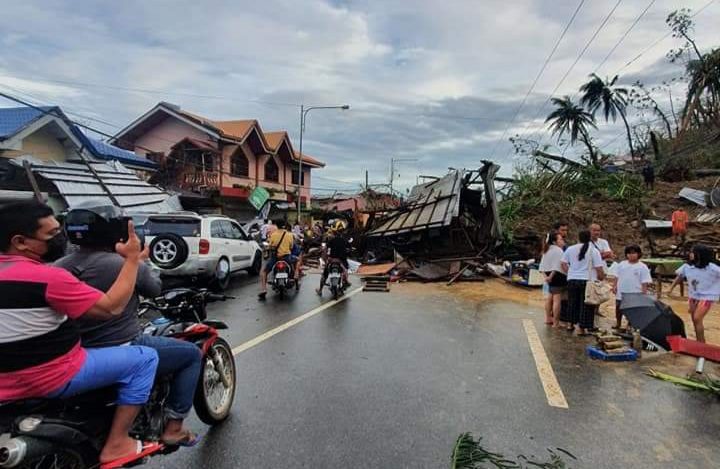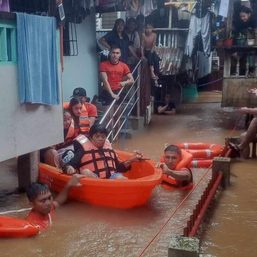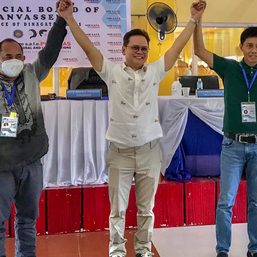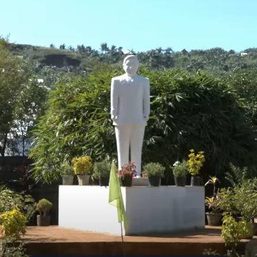SUMMARY
This is AI generated summarization, which may have errors. For context, always refer to the full article.

CAGAYAN DE ORO, Philippines – “Please help us!”
A teary-eyed Surigao City Mayor Ernesto Matugas Jr. begged local governments not affected by the onslaught of Typhoon Odette (Rai) to send aid to the city that was crippled by one of the worst disasters to ever hit it in recent years.
“We were prepared to help only 5,000 families. But all of us were affected – all 170,000 Surigaonons. It spared no one,” Matugas told Surigao-based broadcaster RPN-DXKS on Saturday, December 18. The interview was posted on the broadcaster’s Facebook page on Sunday, December 19.
“I’m not blaming PAGASA (Philippine Atmospheric, Geophysical, and Astronomical Services Administration). It’s just that we didn’t know it was going to be that strong,” Matugas said.
He said the local government anticipated and prepared for winds up to Signal No. 3. But Signal No. 4 went on to be declared late Thursday morning, December 16, as Odette rapidly intensified hours before hitting land.
Matugas said, “By the time they informed us, it was already too late.”
Yet even if PAGASA did much earlier, the mayor said, there was no way the city could have prepared for the kind of heavy rain and powerful winds brought about by Odette.
Surigao del Norte Governor Francisco Matugas said Odette was the “worst typhoon I have ever seen.”
Post-Odette photos and videos of Surigao City showed that it may have lost more in terms of property and vital infrastructure than the neighboring islands of Siargao and Dinagat where the typhoon made its first two landfalls.
Many wooden houses were either destroyed or are gone, especially those built in coastal areas.
Hungry and thirsty people are forming long queues to fetch clean water from a tanker. Faucets are dry, and bottled water has become a precious commodity. People are roaming everywhere to find water to drink, and some are using seawater to clean up.
Sturdier houses and buildings either have damaged roofs or no longer have any. The city hall’s roof is gone, according to Matugas.
Four days after Odette hit Surigao, the city still looked like a war zone.
Garbage was on streets; fallen trees and branches, electric poles, tires, and other debris piled up on roads; corals from the sea littered the coastal section of the Surigao City Boulevard; signboards were toppled; and shards of glass had flown in all directions.

The city, like the rest of Surigao del Norte, has lost its electricity. Its telecommunications infrastructure are down.
People are short of cash, and automated teller machines are unavailable.
Many gas stations suffered damage and only a few remain open. It takes time to gas up because of the long lines and so, many motorists are forced to buy from unscrupulous street-level profiteers who sell fuel by as much as P80 per liter.
The images are reminiscent of the trail of destruction of Tropical Storm Sendong (Washi), which brought Cagayan de Oro and Iligan down to their knees 10 years ago. Incidentally, Odette struck on December 16, the same day Sendong devastated the two Northern Mindanao cities.
Matugas said the city government has declared Surigao under a state of calamity, a move that would allow it to use its reserved disaster relief funds.
He said the tasks were gargantuan, starting from massive road clearing operations to allow smooth relief operations.
“We have to work on the essentials first,” Matugas said.
The local government, he said, was also identifying sources of clean water.
Surigao-based journalist Danilo Adorador had to travel over three hours to Butuan City, Caraga’s regional center, to get a mobile phone signal.
Adorador complained that Surigao City wasn’t getting fast enough relief aid as of Monday morning, December 20.
He said on social media: “I can confirm that no help – in terms of emergency relief aid and other essential needs – has arrived in Surigao City and other hard-hit areas within Surigao del Norte as of posting. Organizing a relief effort for a disaster of this magnitude takes time, but many residents are starving and getting impatient. Also, roads connecting the province to the rest of Mindanao remain intact. So what’s taking so long?”
Adorador said Surigaonons who have the means flock in droves elsewhere, either to buy goods or temporarily relocate.
“Scenes in the interior/rural areas are much worse. Day 4: no water, no electricity, no signal, no relief aid,” read part of Adorador’s post.
“It’s like waking up to doomsday,” he said.
Colonel Noel Espinoza, police director for Surigao del Norte, said more law enforcers were sent to beef up the city police to prevent looting. Some establishments have already been ransacked by thieves.
He ordered more police visibility and street patrols to maintain law and order. – Rappler.com
Add a comment
How does this make you feel?




























There are no comments yet. Add your comment to start the conversation.